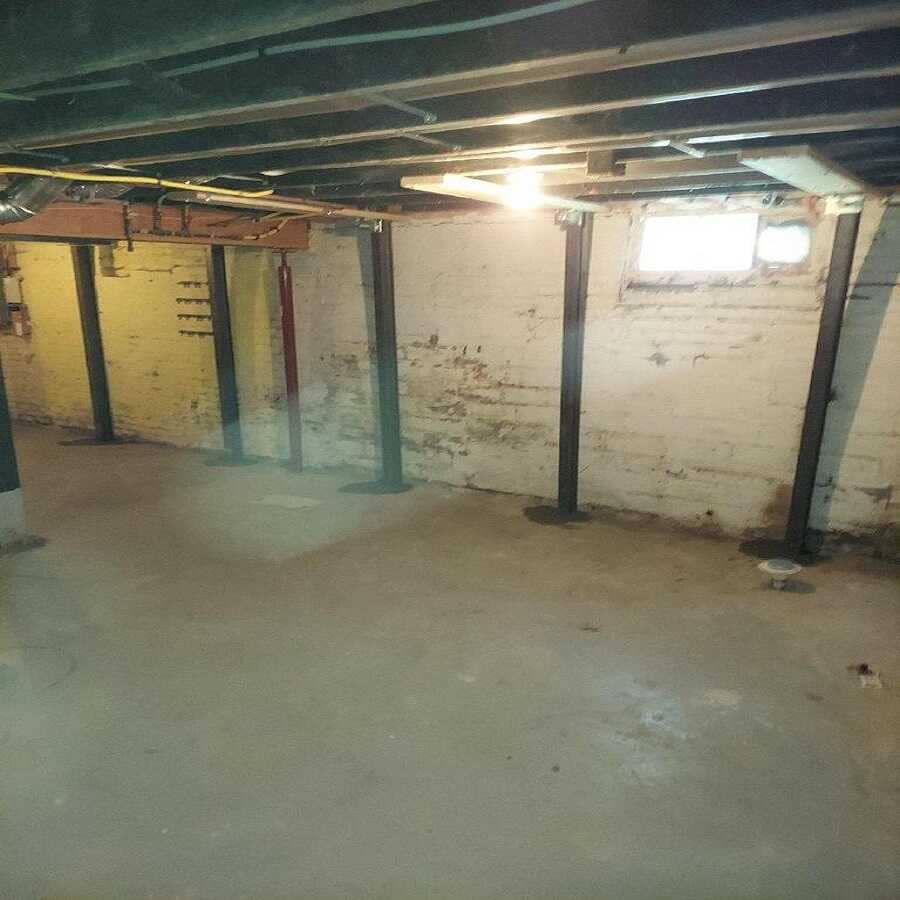More About Best Basement Waterproofing
More About Best Basement Waterproofing
Blog Article
Best Basement Waterproofing for Beginners
Table of ContentsSome Known Questions About Best Basement Waterproofing.The 5-Minute Rule for Best Basement WaterproofingThe 6-Minute Rule for Best Basement WaterproofingUnknown Facts About Best Basement WaterproofingThe Ultimate Guide To Best Basement Waterproofing
AdvantaClean's trained experts and service technicians will situate the water source. If wall or slab fractures are existing, we will inject polyurethane and epoxies right into the cracks and secure the concession, avoiding additional moisture from going into.
If there's condensation outside of the foil, you have high moisture in your cellar. Fix it with a mobile space dehumidifier or a whole-house humidifier system rather than waterproofing products. If the aluminum foil has condensation on the within surface area (beside the wall), the soil around your house might be naturally damp from a high water table or inadequate dirt water drainage.
You can waterproof just your indoor wall surfaces, which might solve the issue. Or you can waterproof your exterior wall surfaces, which is a better wager yet more expensive. Below's the scoop on the various types: These thick finishings are cement-like. Once they dry, they adhere completely to concrete and masonry walls (Best Basement Waterproofing).
An Unbiased View of Best Basement Waterproofing
Concrete waterproof coatings can't be applied to formerly painted surfaces; inspect the tag. Recognized as densifiers, they are appropriate just for walls that have not been painted or secured.
But you clean, roll, or spray it on far more thickly one gallon covers just 75 square feet, not the 300 square feet normal with basic paint. Water-proof paint is great for do it yourself application. You can apply it over repainted surface areas, and paint over it once it's cured (one gallon costs $37).
It can set you back $10,000 to $15,000, depending on the job needed. Outside waterproofing involves excavating all around the home to the full deepness of the structure walls, after that installing a water resistant layer or membrane layer topped by drain panels.
A cellar without waterproofing is kind of like that. Your cellar does not want to go with a rainstorm without proper defense simply as much as you do not want to.
What Does Best Basement Waterproofing Do?
Yet if you have actually done your study, you 'd recognize there are two sorts of waterproofing: exterior and interior. It can get puzzling what they both mean, which one's a much better investment, and what will actually maintain the water out. Do not fret, we created this blog site to conveniently specify both methods for you and discuss the pros and cons of each.
Outside waterproofing is a waterproofing approach that involves securing your home from the exterior. The structure wall surfaces are after that cleaned up, secured, and covered with a waterproof membrane or sealant.
The Single Strategy To Use For Best Basement Waterproofing
It's an extra engaged process that calls for excavating up your backyard, which is costly and taxing. Outside waterproofing includes getting rid of whatever bordering the home, including patios, driveways, pathways, landscape design, air conditioner units, decks, and so forth. If any of the job was done improperly and water is still entering your cellar, there isn't much you can do to fix or repair it.
Inside cellar waterproofing involves waterproofing from the within. Any type of water that leaks right into your cellar is rerouted prior to it touches your floor. It's type of like putting on a raincoat about his under your clothing. It entails two points: a water drainage track and a sump pump. It functions by securing the inside of your cellar wall surfaces and floors so water that attempts to go into is carried out with a sump pump.
It's an effective approach to water resistant your basement - Best Basement Waterproofing. The disadvantage of interior basement waterproofing primarily involves the setup process. This method needs kept products, furnishings, and integrated shelving or closets to be moved from touching the cellar walls. And throughout setup, your cellar can not be used. The most significant difference in between the 2 methods is this: Outside waterproofing is a preventative remedy and indoor waterproofing is a rehabilitative remedy.
The Best Strategy To Use For Best Basement Waterproofing
Finally, outside and indoor cellar waterproofing are both efficient techniques of safeguarding your home from water damage. look at more info Exterior waterproofing produces a barrier that stops water from entering your home, while interior waterproofing reroutes water that does enter your home. And it is necessary to note that outside waterproofing is a costly and disruptive installation process when compared to interior waterproofing.
Whichever approach you choose, make certain you pick a trustworthy and trustworthy specialist for the job. Both approaches need skilled workers to handle the job. If you have any kind of questions about cellar waterproofing, please connect to us. And if you're in our solution location and have water in your cellar, contact us for a cost-free, no-obligation home examination.
You can complete our form right here, begin a chat in the lower right-hand edge, or call us at 1-800-827-0702.
Report this page